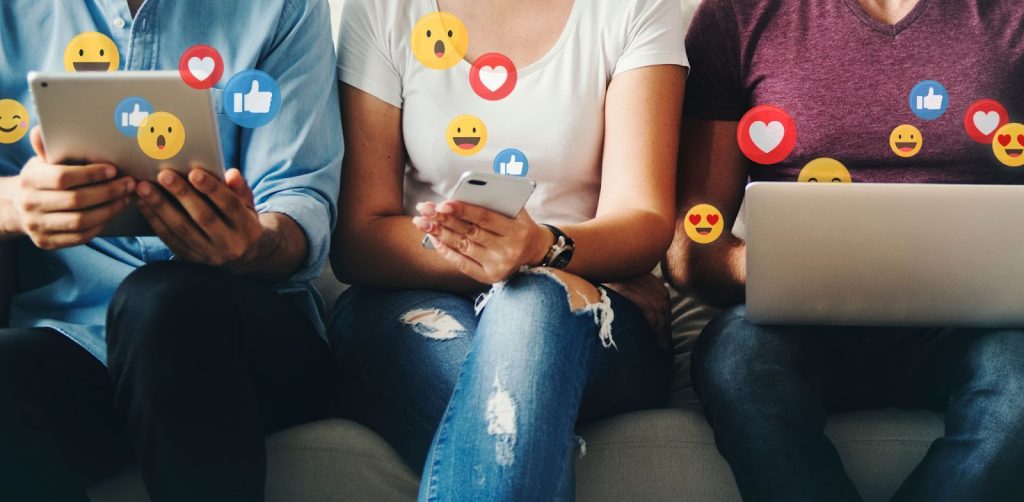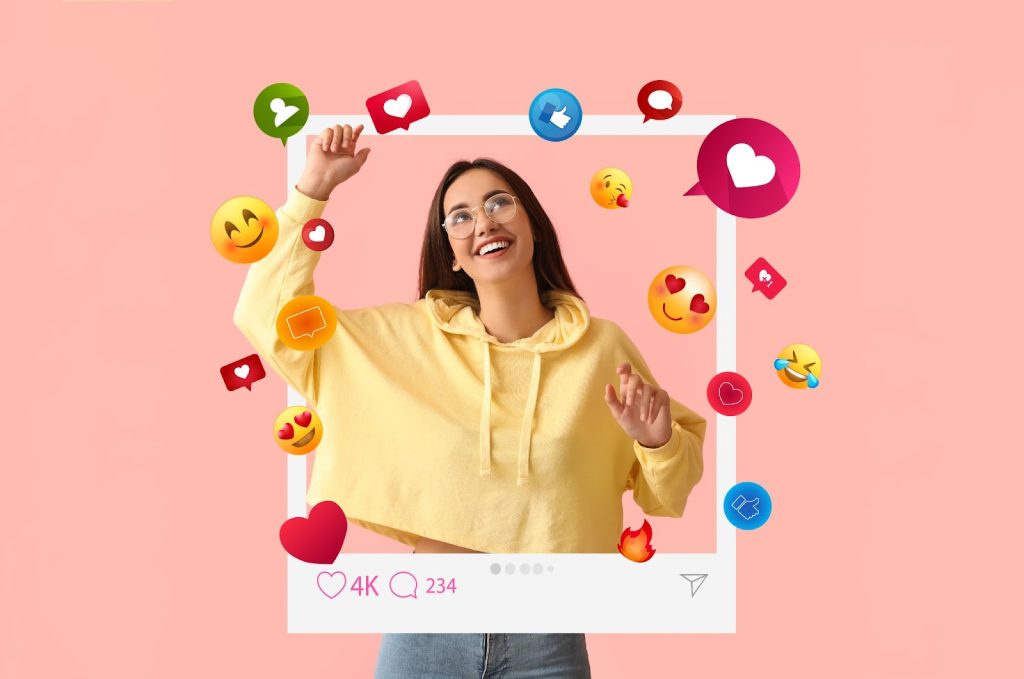In today’s visually driven digital landscape, the quality of your images can make or break your brand’s online presence. High quality images do more than beautify your content; they are a pivotal tool in enhancing user engagement, improving SEO performance, and establishing credibility.
Whether you’re looking to captivate your audience, rank higher in search engine results, or navigate the complex legalities of image use, understanding the strategic importance of high quality visuals is essential.
In this blog, we’ll explore why top-notch images are crucial across various aspects of your digital marketing strategy, from boosting your SEO to ensuring you stay on the right side of copyright laws.
Get ready to discover how the right images will transform your social media and marketing efforts, bringing in new business and setting you apart from the competition.
Images have a bigger impact
Humans tend to be visual learners, so seeing an image representing a message will resonate with us more than a few simple words. While captions are essential, nothing beats having high quality images that get your point across while capturing the viewer’s attention.
Think of it this way: If you saw an ad on social media with no image saying, “This red dress is so flattering that you’ll think it was made for you,” would you even consider clicking on it? Probably not.
But if you saw an ad with a picture of the beautiful red dress, you’d probably be much more likely to click on the ad, navigate to the business page, or even buy the dress. And it’s all because of the difference an image makes.
Establish credibility
High-resolution, well-composed images present a professional appearance, akin to a neat and tidy storefront that attracts more customers.
They demonstrate that your brand pays attention to detail, suggesting that the same level of care and precision goes into your products and services. This is particularly important in industries where visual representation is directly tied to product or service quality, such as fashion, food, real estate, and lifestyle sectors.
Consistency in image quality and style across your platforms reinforces your brand identity, strengthening it and building trust with your audience — a cornerstone of credibility.
This trust is reinforced as high quality images typically engage more users, garnering likes, shares, and comments more effectively than lower-quality visuals. Increased engagement fosters a sense of community and loyalty among followers, further enhancing your brand’s credibility.
For businesses that rely on showcasing expertise, like those in fitness, photography, or cooking, detailed and clear images effectively demonstrate competence and authority.
By investing in top-notch visual content, you not only set the tone for what newcomers should expect from your brand but also reinforce the confidence of existing customers in your products or services.
In a competitive digital landscape, the credibility established by professional imagery significantly impacts your brand’s ability to attract and retain customers.

High quality images are shareable images
What is the goal of your social media post?
Most companies would say “to make more sales,” right? Well, how do you get more sales? By retaining loyal customers and by acquiring new customers.
But what if you could “employ” your loyal customers to reach your new customers? If your images are on-brand and high quality, there’s a much higher chance that your customers would be willing to share your brand and its associated images on their social media pages.
It’s as simple as this: high quality pictures make you a brand that people are willing to discuss and recommend.
The role of images in SEO
Images aren’t merely visual enhancements for content; they are pivotal in boosting a website’s search engine optimization (SEO). A strategic approach to using high quality images significantly impacts a site’s visibility and ranking in search results. Here’s how images influence SEO and what you can do to maximize their effectiveness:
Image search rankings
High quality images are more likely to appear in Google’s image search results. Users frequently use image search to find products, services, and information. Appearing in these searches will drive additional traffic to your website, especially if the images are clear, relevant, and appealing.
Page load speed
While high quality images are crucial, it’s important to balance quality with optimization. Large image files often slow down page load times, negatively affecting SEO.
Optimizing images through compression and proper formatting (like using JPEG for photographs and PNG for graphics with fewer than 16 colors) maintains quality without compromising page speed, a critical ranking factor in Google’s algorithms.
User engagement
High quality, relevant images improve the user experience, increasing the time spent on the page and reducing bounce rates — both important SEO metrics. Engaging images make content more understandable and appealing, encouraging visitors to stay longer and interact more with the site. This, in turn, signals to search engines that the content is valuable.
Alt text and image titles
Alt text and titles are essential for SEO. They help search engines understand what the image is about, which is crucial for ranking in image search results. Descriptive, keyword-rich alt text and titles boost visibility in standard and image searches. However, avoiding keyword stuffing is important; instead, provide clear, contextually relevant descriptions.
Structured data and image sitemaps
Implementing structured data for images enhances visibility in image search results and featured snippets. Additionally, creating an image sitemap makes it easier for search engine crawlers to find all the images hosted on your site, particularly if they are embedded in scripts or stylesheets that are hard for crawlers to detect.
Mobile responsiveness
With the increasing use of mobile devices to access the internet, ensuring that images are mobile-friendly is crucial. This means they should be responsive, resizing automatically to fit different device screens. Mobile optimization also affects SEO, as Google uses mobile-first indexing to rank sites.
Incorporating images into your SEO strategy involves more than adding visuals to your content. It requires thoughtful selection, optimization, and description to ensure they contribute positively to your site’s search engine ranking and overall user experience.

Tips for creating high quality social media posts
Here are our top 10 tips on how you can create better, high quality images for your social media pages:
- Showcase your company, its product or services, your community, and your mission.
- Create a color palette that you can pull from for all your images.
- If you use stock images, resize them to fit correctly for each social media site.
- Create a Canva account or something similar for posting quotes, testimonials, and other text images.
- Hire a professional photographer and a graphic designer.
- Create eye-catching infographics.
- Use images that trigger an emotion that’s on-brand for you.
- Optimize your images for mobile device display.
- Use contrasting colors that will make the subject of the image stand out.
- Think about what is trending and use that to your advantage.
Legal considerations and image sourcing
Using high quality images in your social media and marketing efforts is essential, but it’s equally important to ensure that these images are sourced and used legally. Navigating the legal landscape of image use will protect your business from costly litigation and preserve your reputation. Here are key considerations and best practices for legally sourcing and using images:
Understanding copyright law
Most images are protected by copyright law, which means the original creator holds exclusive rights to use, distribute, and reproduce the image. Using someone else’s copyrighted image without permission can lead to legal issues. Understanding the basics of copyright laws and how they apply to images is crucial.
Licensing options
There are several ways to use images legally:
Purchasing stock photos
Websites like Shutterstock, Getty Images, and Adobe Stock offer vast libraries of images that you can purchase for commercial use. These platforms provide various licensing options tailored to different business needs.
Creative commons licenses
Some photographers and artists allow their work to be used under Creative Commons licenses, which come in various forms. Some allow only non-commercial use, while others permit modification of the original work. Always check the license type and comply with its terms.
Free image repositories
Platforms like Unsplash, Pexels, and Pixabay provide high quality images for free. While these images are generally free from copyright restrictions, it’s important to review the terms of use on each platform as they might require attribution or have other stipulations.
Fair use doctrine
The fair use doctrine sometimes allows limited use of copyrighted material without permission. This is typically applicable for uses such as criticism, comment, news reporting, teaching, scholarship, or research.
However, fair use is a legal gray area determined on a case-by-case basis, often in court. Relying on fair use for commercial purposes is risky and generally not recommended.
Proper attribution
If an image requires attribution, make sure to provide it correctly. This includes mentioning the creator and the license under which the image is used and providing a link back to the source, if required. Failing to attribute an image properly can still lead to legal issues, even if the image is free to use under a Creative Commons license.
Creating original content
Creating your own images is one of the safest and most effective ways to avoid legal pitfalls. Using original photography or designs ensures complete control over the usage rights. Additionally, this can help establish a unique visual style for your brand.
Documenting permissions and license
Whenever you obtain an image, whether through purchase, a free site, or direct permission from the creator, always keep thorough records of the licensing agreements and terms of use. This documentation will be invaluable in defending against any potential copyright claims.
Adhering to these legal considerations and best practices can enhance your marketing efforts with high quality images without risking legal complications. Always stay informed about copyright laws and licensing changes to ensure your image use remains compliant.
Up your game with Revity Marketing Agency
Ready to elevate your brand’s visual impact with high quality images that not only capture attention but also comply with legal standards and boost your SEO?
Turn to Revity Marketing Agency for expert guidance and innovative solutions. Our team of creative professionals specializes in sourcing, optimizing, and strategically implementing stunning visuals that resonate with audiences and drive results.
Don’t let your brand blend into the background — choose Revity Marketing Agency and watch your content stand out and succeed. Contact us today to see how we can transform your visual content strategy and help you make a lasting impression.
































